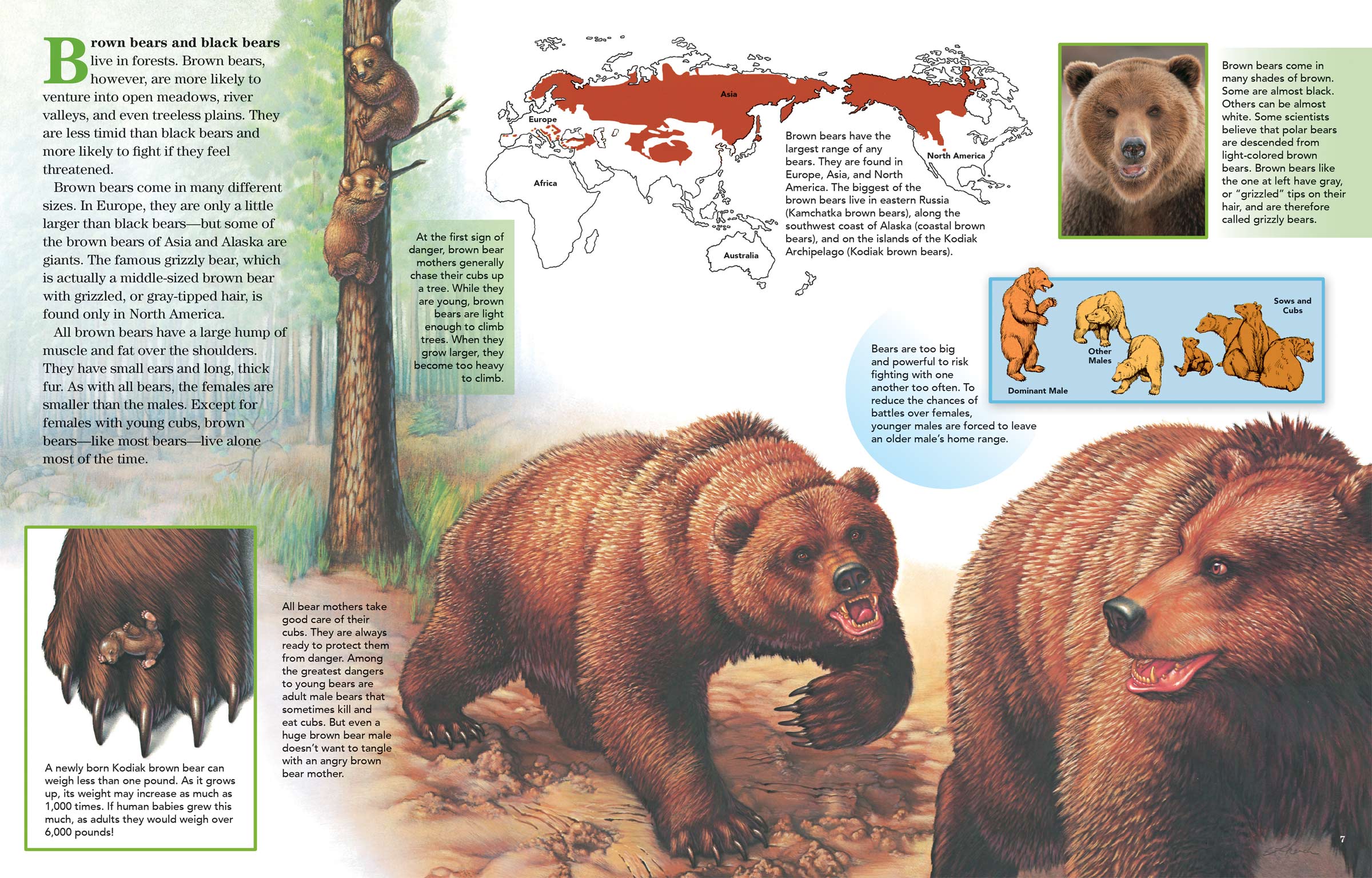
Brown Bears
ByBrown bears and black bears live in forests. Brown bears, however, are more likely to venture into open meadows, river valleys, and even treeless plains. They are less timid than black bears and more likely to fight if they feel threatened.
Brown bears come in many different sizes. In Europe, they are only a little larger than black bears—but some of the brown bears of Asia and Alaska are giants. The famous grizzly bear, which is actually a middle-sized brown bear with grizzled, or gray-tipped hair, is found only in North America.
All brown bears have a large hump of muscle and fat over the shoulders. They have small ears and long, thick fur. As with all bears, the females are smaller than the males. Except for females with young cubs, brown bears—like most bears—live alone most of the time.
At the first sign of danger, brown bear mothers generally chase their cubs up a tree. While they are young, brown bears are light enough to climb trees. When they grow larger, they become too heavy to climb.
A newly born Kodiak brown bear can weigh less than one pound. As it grows up, its weight may increase as much as 1,000 times. If human babies grew this much, as adults they would weigh over 6,000 pounds!
All bear mothers take good care of their cubs. They are always ready to protect them from danger. Among the greatest dangers to young bears are adult male bears that sometimes kill and eat cubs. But even a huge brown bear male doesn’t want to tangle with an angry brown bear mother.
Brown bears have the largest range of any bears. They are found in Europe, Asia, and North America. The biggest of the brown bears live in eastern Russia (Kamchatka brown bears), along the southwest coast of Alaska (coastal brown bears), and on the islands of the Kodiak Archipelago (Kodiak brown bears).
Brown bears come in many shades of brown. Some are almost black. Others can be almost white. Some scientists believe that polar bears are descended from light-colored brown bears. Brown bears like the one at left have gray, or “grizzled” tips on their hair, and are therefore called grizzly bears.
Bears are too big and powerful to risk fighting with one another too often. To reduce the chances of battles over females, younger males are forced to leave an older male’s home range.

